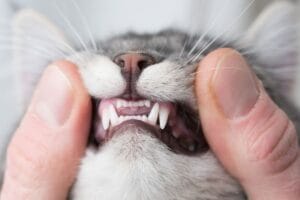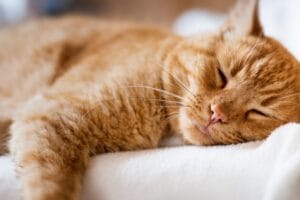Can Cats Eat Chicken Hearts? – Everything You Need to Know
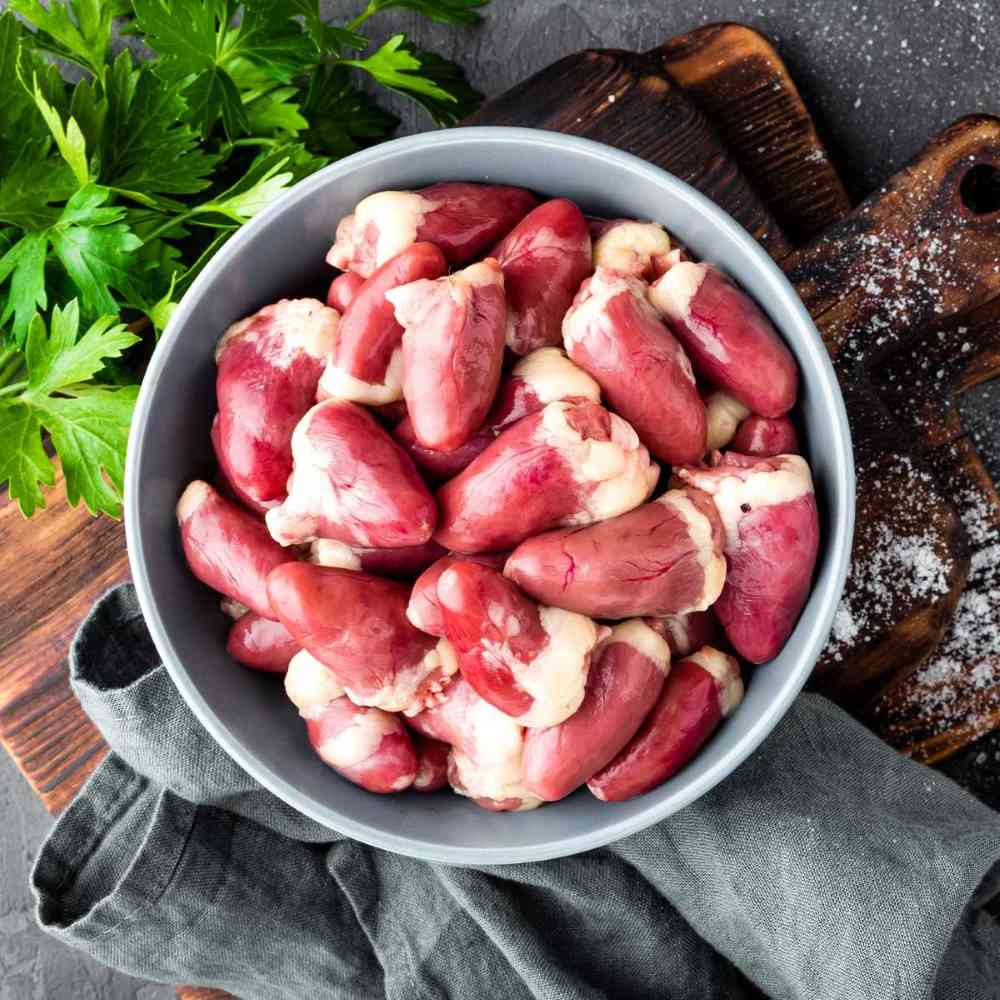
Many pet owners are guilty of overlooking their cat’s dietary needs, unaware of the nutritional value simple foods like Chicken Hearts can provide. Yes, we’re talking about those tiny organ meats that hold a wealth of nutrients! In this article, we’ll answer the question “Can cats eat chicken hearts?” and give you a peek into all the health benefits associated with it. We’ll explore different cooking methods, debate the raw food trend, and help you understand what’s best for your pet’s well-being.
- Nutritional Requirements of Cats
- Nutritional Benefits of Chicken Hearts for Cats
- Is it Safe to Feed Chicken Hearts To Cats?
- Can You Boil Chicken Hearts for Cats?
- Chicken Hearts for Cats: Raw or Cooked?
- Cooking Chicken Hearts for Cats: Tips and Ideas
- Alternatives to Chicken Hearts
- Frequently Asked Questions (FAQs)
- Conclusion
Nutritional Requirements of Cats
Cats have a unique and fascinating dietary makeup. As obligate carnivores, they are specifically designed to thrive on a diet that revolves around meat. To ensure their optimal health, it is crucial to understand the specific nutrients they require:
- Taurine: One of the most crucial amino acids for cats is taurine. The catch is that cats cannot produce taurine on their own, making it an essential dietary component. This amazing nutrient plays a vital role in maintaining heart function, ensuring clear vision, and supporting reproductive health.
- Protein: High-quality protein is an absolute must for our feline friends. It plays a significant role in maintaining their muscles, supporting growth, and contributing to their overall well-being.
- Fatty Acids: Omega-3 and omega-6 fatty acids are superheroes for cats’ health. They promote healthy skin, leading to a glossy and luxurious coat, while also providing crucial support to their immune system.
- Vitamins and Minerals: Just like us, cats need a variety of essential vitamins and minerals to function optimally. Vitamin A, vitamin D, calcium, and phosphorus are among the key nutrients they require to thrive in their daily lives. Understanding and meeting these unique nutritional requirements is essential in ensuring our beloved feline companions lead happy, healthy lives.
Nutritional Benefits of Chicken Hearts for Cats
Now that you understand the nutritional requirements of a cat, the question arises: Can cats eat chicken hearts to get these nutrients? And the answer is Yes! Introducing chicken hearts into a cat’s diet can be a nutritional game-changer. These tiny organ meats come packed with incredible benefits for our feline friends:
A. High-Quality Protein Source: Cats, being obligate carnivores, thrive on protein-rich diets. Chicken hearts provide a generous dose of high-quality protein, offering essential amino acids that play a crucial role in supporting their overall health and vitality. From maintaining strong muscles to promoting proper growth, this protein powerhouse has it all covered!
B. Abundance of Taurine: Taurine, that superhero amino acid, is an absolute must for cats. The good news is that chicken hearts are a natural and tasty source of this vital nutrient. Taurine supports a cat’s heart health, ensures sharp vision, and even plays a role in reproductive well-being. It’s like a magical boost for their body and soul!
C. Comparison with Other Cat Food Options: As pet owners, we’re often on the lookout for healthier alternatives to commercial cat foods. Chicken hearts come to the rescue! Unlike some processed options filled with additives and fillers, chicken hearts offer a pure and unprocessed choice that brings the natural goodness of the wild straight to your cat’s bowl.
Based on these benefits it’s quite obvious how beneficial it is to feed chicken hearts to your cats.
Is it Safe to Feed Chicken Hearts To Cats?
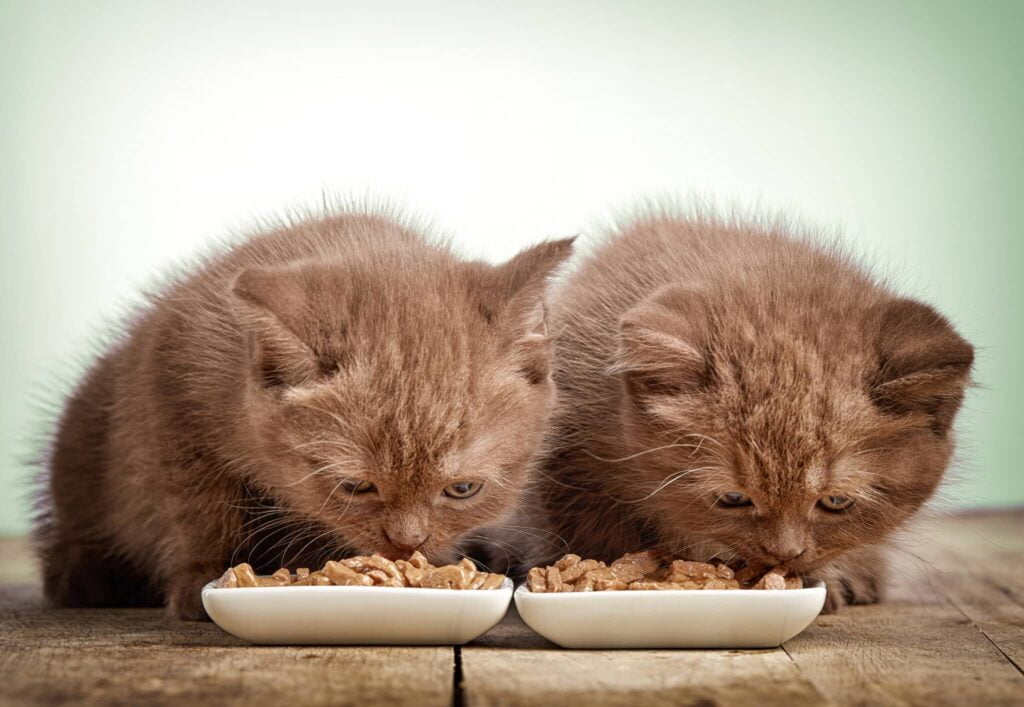
We understand that some pet owners might still be doubtful about feeding chicken hearts to their cats. After all, ensuring the safety of our beloved pet cats is of utmost importance, especially when it comes to their diet. So, the question arises: Is it safe to feed chicken hearts to cats?
The good news is that, in general, chicken hearts can be a safe and nutritious addition to a cat’s diet when prepared and fed correctly. They offer a plethora of benefits, that make it worth feeding to your cats.
However, a few considerations are essential to ensure their safety.
Firstly, chicken hearts should be properly cooked or boiled to eliminate potentially harmful bacteria, reducing the risk of foodborne illnesses. Secondly, portion control is crucial to avoid overfeeding and maintain a balanced diet for your cat.
Lastly, some cats may have specific dietary sensitivities or allergies, so it’s essential to observe their response when introducing new foods.
Can You Boil Chicken Hearts for Cats?
For cat owners seeking a safer alternative to raw feeding, boiling chicken hearts can be a viable option. Boiling is a common practice used to reduce the bacterial risks associated with raw meats, ensuring that the chicken hearts are safe for feline consumption. Through the process of boiling, potential harmful pathogens like Salmonella and E. coli are eradicated, mitigating the risk of foodborne illnesses in cats.
To ensure optimal safety and nutritional value, proper preparation is essential. Boil the chicken hearts thoroughly until they are fully cooked and free from any raw appearance. This simple cooking method not only guarantees the removal of harmful bacteria but also enhances the palatability of the hearts, making them more enticing for your feline friend.
Furthermore, portion control plays a crucial role in maintaining a well-balanced diet for your cat. While chicken hearts can be a nutritious treat, it’s important not to overfeed, as excessive consumption can lead to an imbalanced diet.
Chicken Hearts for Cats: Raw or Cooked?
The eternal question lingers: should we serve chicken hearts to our pet cats raw or cooked? While there are many differences of opinions with regards to this debate, lets break them down logically:
A. Raw Food Diets: Advocates of raw diets argue that they align with a cat’s natural diet in the wild, offering potential benefits such as improved coat health and digestion. Supporters believe that the natural enzymes and nutrients in raw foods are better preserved, enhancing a cat’s overall well-being.
B. Risks and Safety Considerations: However, raw diets come with their fair share of risks and safety concerns. Raw meat, including chicken hearts, can harbor harmful bacteria like Salmonella and E. coli, posing health hazards not only for cats but also for their human caretakers. Moreover, feeding a raw diet requires meticulous attention to ensure a balanced and complete nutritional profile, avoiding potential deficiencies.
C. Cooking Chicken Hearts: Cooking chicken hearts emerges as a reassuring option for cat owners concerned about the potential risks of raw feeding. Through the cooking process, harmful pathogens are eliminated, significantly reducing the likelihood of foodborne illnesses. Additionally, cooked chicken hearts can still provide essential nutrients, albeit with some loss due to the heat.
Ultimately, the choice between raw and cooked chicken hearts ultimately depends on the owner’s preference and consideration of the risks and benefits. If you opt for raw feeding, it is essential to handle and store the food with utmost care. Conversely, cooked chicken hearts offer a safer alternative that can still provide valuable nutrition for your beloved feline companion.
Cooking Chicken Hearts for Cats: Tips and Ideas
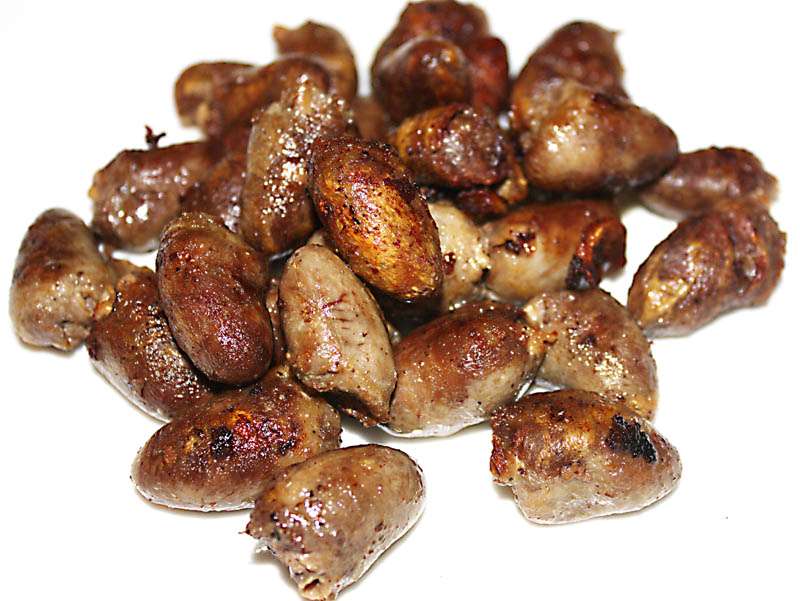
Cooking chicken hearts for your pet cat is a wonderful way to provide a tasty and nutritious treat. Boiling these tiny organ meats is a simple and effective cooking method that not only ensures their safety but also preserves their natural goodness.
To elevate your cat’s dining experience, consider adding other cat-friendly ingredients to create a balanced and flavorful meal. Mixing boiled chicken hearts with cooked vegetables like carrots or peas can introduce essential vitamins and minerals to their diet. You can also add a small portion of cooked rice or quinoa to enhance the meal’s nutritional value.
Homemade recipes offer endless possibilities for catering to your cat’s taste preferences and dietary needs. Creating a custom blend of boiled chicken hearts, cooked vegetables, and a touch of healthy fat, like a drizzle of olive oil, can provide a well-rounded and satisfying meal for your furry friend.
Remember to avoid adding any seasonings, herbs, or spices to the recipe, as some of these may be harmful to cats. Simplicity is key when preparing meals for our feline friends.
Always keep portion sizes in mind to prevent overfeeding and maintain a balanced diet. Regularly monitoring your cat’s response to the new recipe can help gauge their enjoyment and ensure the meal suits their individual needs.
Alternatives to Chicken Hearts
If chicken hearts are not suitable for your cat or unavailable, various organ meats can provide similar nutritional benefits. Here is a list of alternatives to chicken hearts that you can feed to your pet cat that are equally nutritionally beneficial for your cat:
- Chicken Liver: Chicken liver is a fantastic substitute, offering a wealth of essential nutrients that cats relish. It’s rich in vitamins A and B, iron, and protein, contributing to your cat’s overall health and vitality.
- Beef Liver: Beef liver is another excellent option, brimming with essential vitamins and minerals. It contains vitamin B12, iron, zinc, and copper, all of which play vital roles in a cat’s well-being.
- Raw Chicken: For those considering raw feeding, raw chicken can be a suitable alternative. Just like chicken hearts, raw chicken provides a natural and unprocessed source of nutrients that align with a cat’s carnivorous nature.
- Ground Beef: Ground beef is a versatile option that can be easily incorporated into your cat’s diet. It contains high-quality protein and fat, supporting your cat’s muscle maintenance and energy needs.
Exploring these delightful alternatives not only adds variety to your cat’s meals but also ensures they receive a diverse range of nutrients to thrive. Remember to consult with your veterinarian when introducing new foods, especially if your cat has any dietary sensitivities or health concerns.
With careful consideration and attention to your cat’s unique needs, you can create a menu that caters to their tastes and nourishes their well-being.
Frequently Asked Questions (FAQs)
Feeding chicken hearts to our feline companions can spark curiosity and raise various questions. Here, we address some of the most common FAQs to shed light on this delectable topic to address any further doubts you may have on this topic:
Q1. Can Kittens Eat Chicken Hearts?
Yes, kittens can enjoy chicken hearts, just like adult cats. However, kittens have specific dietary needs due to their rapid growth and development. It’s essential to consult with your veterinarian to ensure the right portion sizes and frequency, providing optimal nutrition for their young age.
Q2. How Many Chicken Hearts Can Be Fed Per Day?
The number of chicken hearts suitable for your cat’s daily intake depends on their age, size, and overall health. As a general guideline, offering a few chicken hearts as an occasional treat is sufficient. Moderation is key to preventing overfeeding and maintaining a balanced diet.
Q3. What If My Cat Refuses to Eat Chicken Hearts?
Not all cats may take an immediate liking to new foods, and that’s entirely normal. If your cat refuses chicken hearts, try offering them in various forms, such as boiled, chopped, or mixed with their regular food. Patience and persistence may help in gradually introducing this nutritious treat into their diet.
Q4. Are There Specific Health Conditions That Affect Chicken Heart Consumption?
Some cats may have certain health conditions, such as kidney disease or dietary sensitivities, which could impact their ability to consume certain foods, including chicken hearts. Always consult with your veterinarian, especially if your cat has any health issues, to ensure that introducing chicken hearts aligns with their specific needs.
Conclusion
Chicken hearts can be a nutritious addition to a cat’s diet when properly prepared and fed in moderation. They offer essential nutrients like protein and taurine, contributing to a cat’s overall health and well-being. However, it is essential to consider the potential risks associated with raw feeding and prioritize safety when introducing new foods. Seeking guidance from a veterinarian and making informed decisions will help ensure that your cat receives a balanced and species-appropriate diet for a happy and healthy life.
